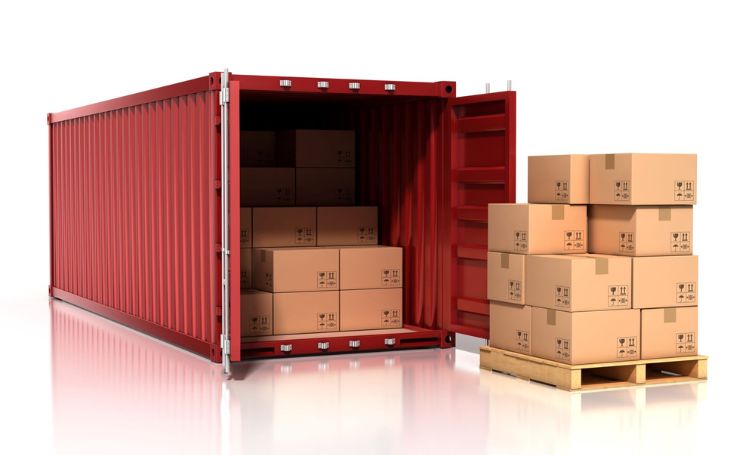Shipping container maintenance and longevity go hand in hand. Ensuring the durability of these versatile structures not only saves money but also extends their lifespan. Whether used for storage, offices, or homes, keeping them in optimal condition is a must.
Below, you’ll find essential tips and guidelines on the ins and outs of shipping container maintenance and longevity.
Knowing Your Material
Understanding the material of your container is a vital first step in effective maintenance and longevity, especially when considering shipping containers for sale. Different materials require specific care and preservation techniques to maximize their service life.
Here are some of the most common materials used in shipping containers:
- Corten Steel: Known for its weathering properties, Corten steel is commonly used for shipping containers. It forms a protective layer of rust that shields the steel from further corrosion. Despite this, it still requires regular inspections for excessive rust.
- Stainless Steel: Highly resistant to corrosion and rust, stainless steel containers can last for a long time with minimal maintenance. However, they should be routinely cleaned to avoid the buildup of damaging residues.
- Aluminum: Lightweight and rust-resistant aluminum containers need protection from scratches that can expose the underlying metal to corrosion.
- Wood: Some containers have wooden components, particularly wooden floors. These should be treated regularly with suitable preservatives to prevent rot and insect infestation.
Understanding the specific maintenance requirements of your container’s material is integral to its preservation and longevity. Catering to these needs enhances the durability and functionality of the container over an extended period.

Rust Prevention
Shipping container maintenance requires diligent attention, with rust prevention standing out as a pivotal aspect to ensure longevity. The steel structure of containers is susceptible to rust, causing them to lose structural integrity over time. Hence, preventive measures to avert rust are crucial for maintaining these structures in prime condition.
- For Corten steel containers, use a rust converter that neutralizes and transforms existing rust into a protective coating. It also helps to apply a layer of high-quality paint designed to withstand extreme weather conditions.
- Stainless steel containers tend to be less prone to rust, but even they need proper care. Regular cleaning with mild detergent solutions is suggested; rinse thoroughly to remove any residual chemicals that could cause corrosion.
- For aluminum containers, applying a zinc-rich primer followed by high-quality exterior paint can effectively prevent rust. In addition, to avoid galvanic corrosion, refrain from directly attaching dissimilar metals.
- Containers with wooden components, such as floors, require special attention. Treat the wood with a suitable preservative that also has rust-resistant properties.
Selecting suitable rust prevention methods depending on the type of shipping container material is a significant factor in enhancing the container’s life span and functionality. Regular inspections and prompt rectification of minor rust spots will also aid in prolonging the container’s serviceability.
Regular Inspection
Regular inspection of shipping containers ensures their longevity and optimal performance. This proactive practice aids in the early detection and remediation of potential issues, preventing minor problems from escalating into costly repairs or significant damage.
Here are some tips on how to conduct a thorough regular inspection:
- It is recommended to conduct thorough inspections at least twice a year, checking for signs of rust, corrosion, or damage on both the interior and exterior surfaces.
- The container’s structural elements, including the doors, hinges, and locks, should be examined for proper function. Lubricating these parts regularly helps in smooth operation and prevents rust.
- Check the roof and the container floor for signs of leaks or damage. Water intrusion is a significant cause of corrosion and must be addressed promptly.
- Any wooden components in the container should be inspected for signs of rot or insect infestations.
- Lastly, pay close attention to the container’s seal. Ensure it remains intact to prevent moisture and pests from infiltrating the container.
A well-maintained shipping container is the result of regular and thorough inspections. By incorporating these tips into a routine maintenance schedule, the service life of a container can be significantly prolonged while maintaining its functional integrity.
Keeping The Container Level
Keeping a shipping container level is crucial for its long-term viability. When a container is placed unevenly, it exerts uneven pressure on its structure, potentially leading to deformation and the malfunctioning of doors and seals over time.
When installing a shipping container, prepare a flat, solid base. This can be concrete, wooden beams, or even a bed of gravel. This helps distribute weight evenly and prevent sinking or tilting. During installation, use a level to ensure the container is precisely horizontal. Once installed, regularly check the level, especially after extreme weather conditions, and adjust as needed.
Maintaining the level of a shipping container is an often-overlooked aspect of container care, but its importance cannot be overstated. It aids in preserving the structural integrity of the container, extending its functional lifespan and ensuring its safe use.
Waterproofing
Effective waterproofing is a crucial part of shipping container maintenance and longevity. Keeping water out significantly reduces the risk of rust, corrosion, and damage to contents. Containers are designed to be weather-resistant, but additional steps can enhance their waterproof capabilities.
- Regularly inspect the roof and walls. Any signs of leaks, cracks, or rust could lead to water intrusion and should be repaired promptly.
- Use quality sealants around areas prone to leaks, like doors, windows, and vents.
- Apply a coat of waterproof paint to provide extra protection against the elements. It’s especially beneficial in regions with heavy rainfall or high humidity.
- Consider installing a roof cover or canopy to shield the container from direct rainfall, reducing the risk of leaks and water damage.
- Ensure proper drainage around the container. Water pooling around the base can cause corrosion over time.
Comprehensive waterproofing measures are essential in maintaining the durability and functionality of a shipping container. With these strategies, container longevity can be significantly enhanced, safeguarding the structure and its contents from water damage.
Proper Container Usage
Finally, remember that how you use your shipping container matters. Avoid putting excessive weight on it or using it in ways it wasn’t designed for. Proper usage can add years to your container’s life.
Adherence to the proper use of a shipping container significantly contributes to its extended lifespan. While these units are designed for heavy-duty use, such as storage, inappropriate handling or overloading can lead to premature wear and tear, affecting their durability and functionality.
Avoid exceeding the maximum weight capacity of the container, which can lead to structural damage. Ensure the load is evenly distributed to prevent pressure points that could warp the container floor or walls. Moreover, refrain from making unnecessary modifications to the container. If modifications are required, they should be carried out by a professional to ensure structural integrity is maintained.
Overall, following appropriate usage guidelines is pivotal to shipping container maintenance. By respecting the container’s limits and treating it with care, its longevity can be significantly enhanced, ensuring that it continues to serve its purpose effectively for years to come.
Establishing Regular Maintenance
Implementing a regular maintenance schedule plays a critical role in prolonging the lifespan and functionality of a shipping container. Adherence to a set of basic maintenance principles can go a long way in preventing minor issues from becoming significant problems.
- As mentioned, schedule regular inspections, ideally twice a year, to check for any signs of damage, corrosion, or other issues. Look at the container structure, seals, doors, locks, and hinges.
- Routinely clean the container to prevent the accumulation of dirt and debris. This also includes cleaning the roof and ensuring the drainage around the container is functioning correctly.
- Periodically repaint the container with high-quality, weather-resistant paint to protect it from the elements.
- If the container has wooden components, apply appropriate wood preservatives to prevent rot and insect infestations.
Regular maintenance is an essential practice in ensuring shipping container longevity. This proactive approach helps preserve the container’s structural integrity and optimizes its performance over an extended period.
Conclusion
The keys to maintaining and prolonging the longevity of a shipping container lie in understanding its materials, preventing rust, conducting regular inspections, ensuring a level base, and practicing appropriate usage. With these tips, you can maximize the lifespan of your container and get the most out of your investment. Long-term thinking is essential when it comes to shipping container maintenance. It’s an investment that will surely pay off in the long run. Remember, a little care goes a long way.
































